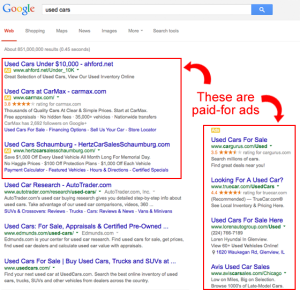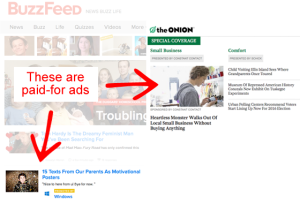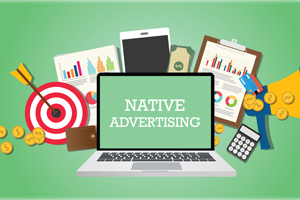Native Advertising: The Comeback Kid
Just like one piece swimsuits and white converse sneakers, native advertising is reemerging into the advertising world. For over a century, brands have been forming new ways to reach target audiences with their native ad strategies. Native advertising has evolved from print, to radio, and is continuously changing. When done properly, native advertising is the form of advertising consumers prefer.
What is Native Advertising?
Native Advertising is a type of online advertising designed to blend into the platform (screen) on which it appears. Advertisers hope to administer a “natural” experience to users when viewing native ads. Native advertising provides advertisers with a solution to get noticed online in a surreptitious way. The largest social media platforms and search engines (Google, Buzzfeed, Forbes, Wall Street Journal) are switching over from traditional display ads to native ads. Forbes.com predicts the native advertising industry will reach $4.6 billion in revenue by 2017.
Netflix recently sponsored a paid post in The New York Times promoting its original series, Orange is the New Black. The advertisement poses as an example of how a native ad camouflages into the site. The picture redirects users to an article about the show:

(picture source: themediabriefing.com)
Native Advertising’s purpose is to blend into the form and function of the surrounding content. Because of this, native ads can be difficult to spot. The screenshot below of Google search results shows how pay-per-click ads are designed to look like organic listings (although they are clearly labeled as sponsored ads):

(picture source: smallbiztrends.com)
The arrow in the picture below points to the native ad on the Atlantic website:

(picture source: smallbiztrends.com)
The arrows in the Buzzfeed screenshot below shows promotional posts located within real news feeds.

(picture source: smallbiztrends.com)
Native Advertising is not just about placement, it is about exceeding user expectations and experiences of finding relevant content through reading. According to nativeadscience.com, native ads “tap into more brain, deliver more focus, more time, more meaning, more subconscious impact and more conscious impact.”
Native advertising was developed to alleviate consumer skepticism and ad avoidance issues. Native advertising creates a higher likelihood that the ads will be watched, read, and listened to.
Works Cited:
“The Science Behind Why Native Ads Work.” The Science Behind Why Native Ads Work. N.p., n.d. Web. 08 July 2016.
“Small Business News, Tips, Advice – Small Business Trends.” Small Business Trends. N.p., n.d. Web. 08 July 2016.

